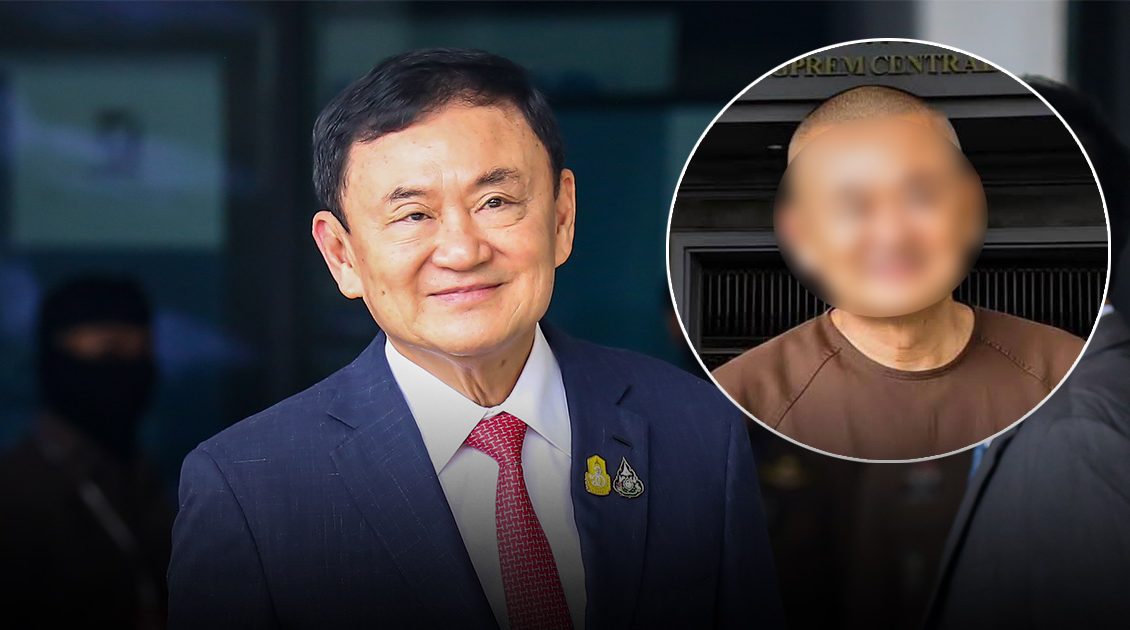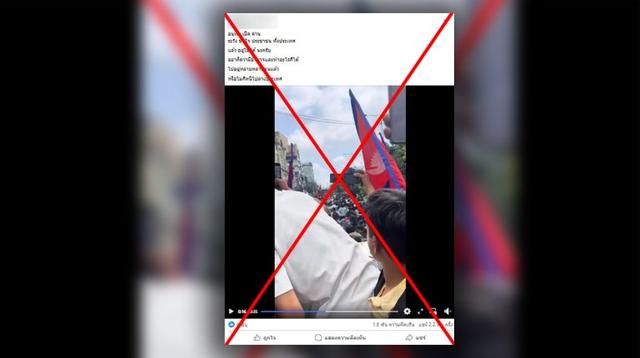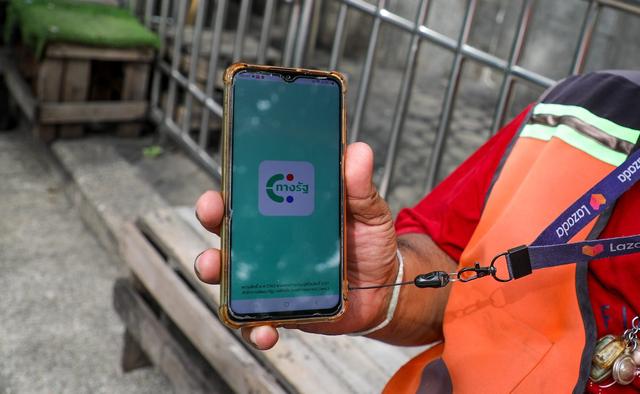Thai PBS Verify พบแหล่งที่มาข่าวปลอมจาก : Threads
Thai PBS Verify reported that a user on the Threads application posted an image of Thaksin Shinawatra, the former Prime Minister, appearing with a shaved head. This followed the Supreme Court’s Criminal Division for Holders of Political Positions issuing a one-year sentence in his 14th Floor Case. The image was accompanied by a caption stating: ‘So cool—looks like the Qing Dynasty.’ Text embedded in the image also read: ‘Thaksin has shaved his head.’ The Director-General of the Department of Corrections said, ‘He has come to terms with it.’ He further revealed that the former prime minister was in good spirits and eating normally.
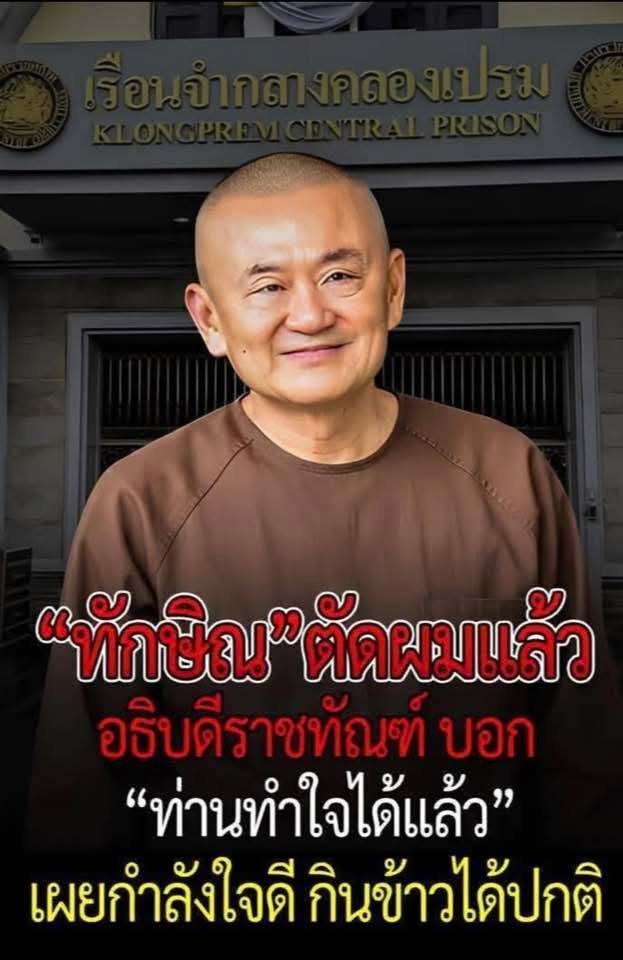
An image of the former prime minister was circulated with a caption stating: “Thaksin has shaved his head. The Director-General of the Department of Corrections said, ‘He has come to terms with it.’ He further revealed that the former prime minister was in good spirits and eating normally.
The post received 1,300 likes, 160 shares, and 183 comments.
Upon verification using keyword searches, it was found that the quote attributed to the Deputy Director-General of the Department of Corrections—‘He has come to terms with it’—matches a news report published by ThaiRath on September 15, 2025.
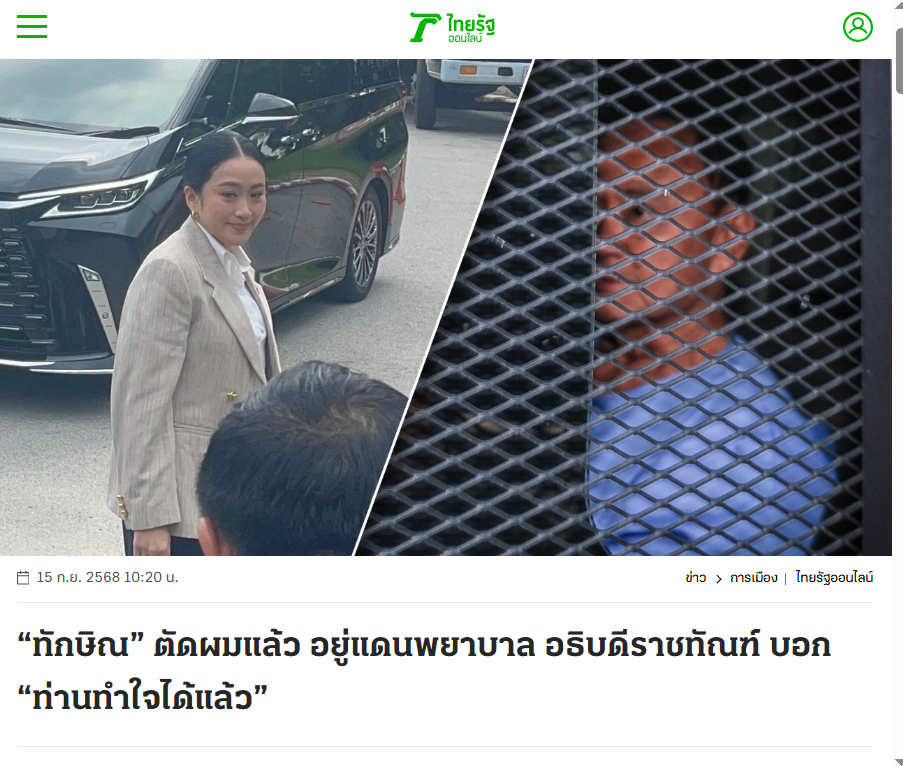
A screenshot of a news report from the Thai Rath Online website stated that on September 15, 2025, at Klong Prem Central Prison, Police Lieutenant Colonel Chain Kanjanapat, Deputy Director-General of the Department of Corrections and spokesperson for the Department, commented on the detention of former Prime Minister Thaksin Shinawatra: “He has come to terms with it. He regularly takes his prescribed medication, reads books, and watches television to relieve stress.”
In addition, we found an image of former Prime Minister Thaksin Shinawatra wearing a prison uniform and covered in tattoos,
which appeared in the comment section as a form of political satire.
Verification confirmed that the image was AI-generated.
When the image was examined using an AI image verification tool from the website Wasitai, it was found that all images had been generated using AI technology.
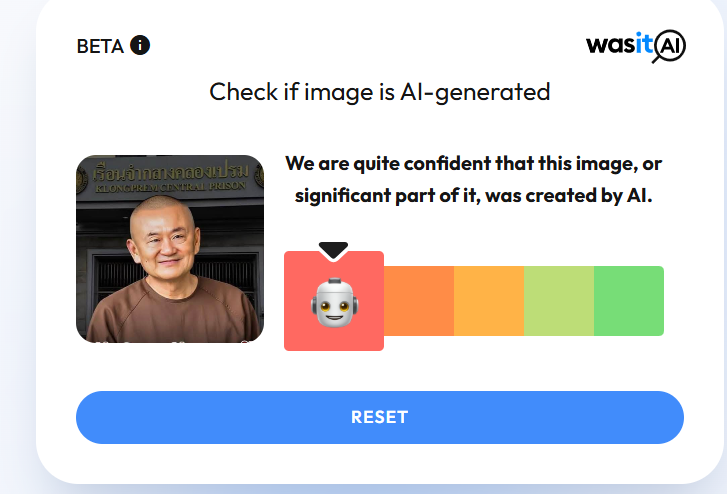
An image of former Prime Minister Thaksin Shinawatra with a shaved head in front of Klong Prem Prison was verified by the website Wasitai. The result confirmed it was AI-generated.
Meanwhile, Thai PBS Verify found that the AI-altered image had been taken from a Thai PBS news report titled “June 18: Four Hot Political Cases to Watch—Will Thaksin Survive?”.
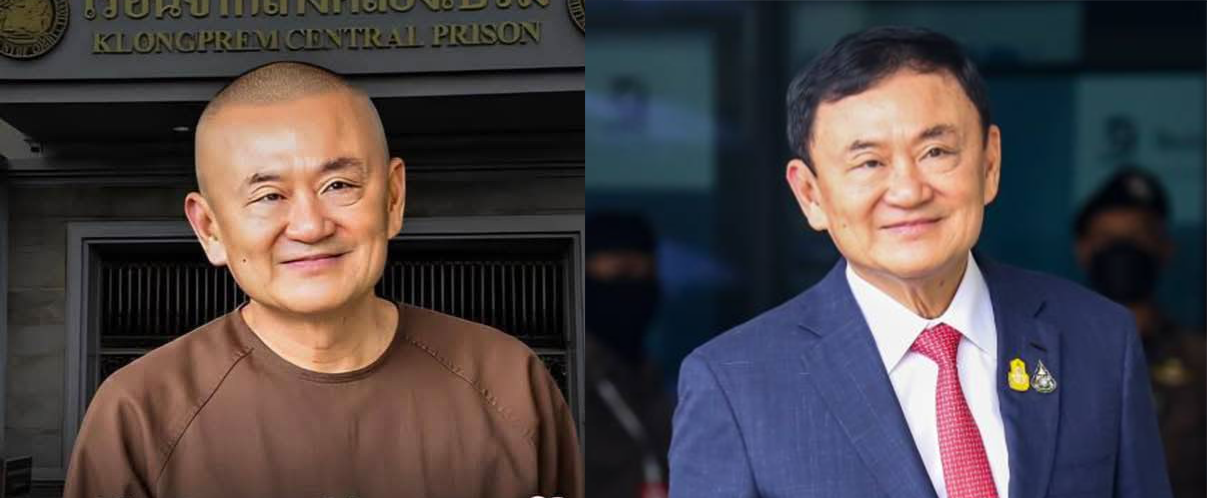
A comparison between the AI-generated image (left) and the original image from the Thai PBS report (right) reveals that both depict the former prime minister’s face from the same angle.
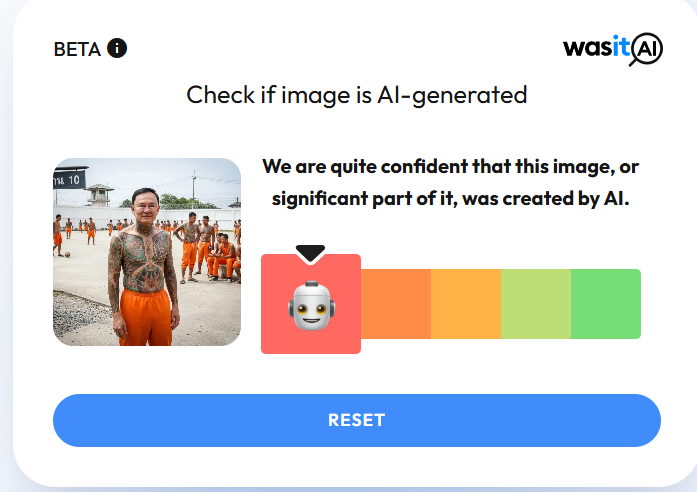
An image depicting former Prime Minister Thaksin Shinawatra in prison attire with tattoos on his upper body was verified by the website Wasitai. The result confirmed it was AI-generated
The Department of Corrections confirmed the image was fake.
A representative from the department informed Thai PBS Verify that the image of the former prime minister circulating on social media was fabricated. They explained that the Department of Corrections maintains official records and profiles of inmates according to legal procedures, but regulations prohibit the release of any inmate’s personal data or images.
Therefore, any image claiming to show scenes inside the prison or depicting an inmate being publicly shared is not possible.
AI-driven hate sells—and generates revenue.
Associate Professor Dr. Wilaiwan Jongwilaiwan from the Faculty of Journalism and Mass Communication, Thammasat University, commented on the phenomenon in comparison to the Thai–Cambodian border tensions. She noted that AI-generated satirical images are often created to boost engagement, which in turn drives revenue for popular pages and influencers.
“Thaksin is a public figure constantly in the spotlight. People want to see and react to stories about the former prime minister with varying emotions—some admire him, others do not. So even when people know the image is fake, they still share it, which helps influencers and pages get benefits from it.”
Dr. Wilaiwan emphasized that in cases involving AI-generated images, professional media outlets should refrain from amplifying or distributing them, especially within the social media ecosystem. She urged all stakeholders to recognize their roles and act with greater social responsibility.
Freedom (of images) built on hate
While many may view the alteration or satirical portrayal of public figures as an exercise of freedom of speech or freedom of expression, Assoc. Prof. Dr. Wilaiwan Jongwilaikasem argues that such actions must remain within the bounds of appropriateness and be guided by the principle of empathy.
“Imagine if we were mocked in the same way—would we find it amusing?
The Shinawatra family likely wouldn’t. They may feel pain in their own way.”
“One of the most disturbing things is how people react with this phenomenon—like hanging a picture of someone we love at an intersection and letting everyone throw stones at it.
That’s no different from the hateful comments we see online.
The media ecosystem is saturated with bias, which intensifies the emotional drama of such incidents.”
From Paper to Screen: The Shifting Landscape of Political Satire
Assoc. Prof. Dr. Wilaiwan Jongwilaikasem reflected on how political satire used to appear in clearly designated spaces—such as cartoon columns in newspapers. For example, “Phujatkuan” in Manager Daily
was widely understood by readers as a space for opinion and satire, not factual reporting.
“Today, those boundaries have blurred. In the past, news was news, and columns were clearly marked as personal opinions of authors. Cartoons had bylines—readers knew who was responsible for the content. But now, we don’t know who created an AI-generated image, and people share it freely. If someone holds bias, they’re ready to believe it’s true—or worse, present falsehoods as truth.”
“What’s truly alarming is that some media outlets knowingly publish fake content just to boost views or sales. That reflects a serious lack of responsibility in fulfilling their role.”
